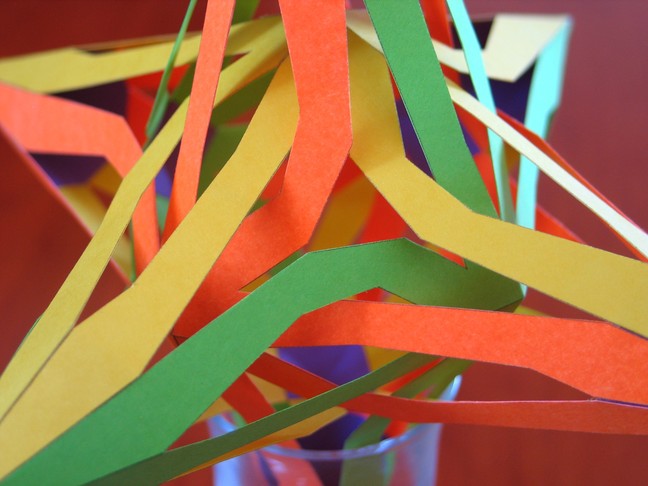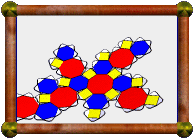 | Topological Small Hexacronic Icositetrahedron |
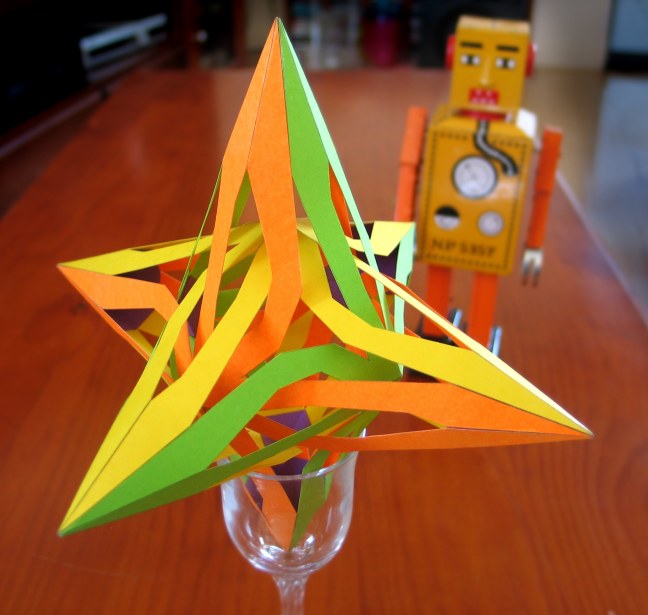
This is a stylized version of the
small hexacronic icositetrahedron, dual of the
small cubicuboctahedron.
The idea is that only true edges of the polyhedron should connect.
The false edges that normally appear in a model where faces intersect
but don't share a true edge have been removed by hiding parts of each face,
allowing the faces to pass through each other without collision. I call this a
topological model, as it highlights the true
topology of the polyhedron. This lets you
better see the internal structure of the polyhedron.
The polyhedron normally has the same external appearance as the small
rhombihexahedron, making them impossible to distinguish. This version however
shows the true topology and could thus not be mistaken for the small
rhombihexahedron.
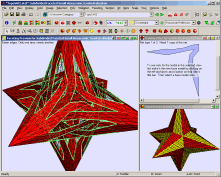
|
This model was designed by starting with the built-in small hexacronic
icositetrahedron, subdividing its faces, and faceting the desired
cut-out shapes using the new vertices. The original faces are concave,
which means Stella's face-subdivision may not do what you expect, so
first I used faceting mode to split the concave quadrilateral faces
into two triangular faces each. Then we can subdivide faces with 8
subdivisions per edge, and use Faceting Mode to create the final pieces
required, using the new vertices available from the subdivision. This
faceting does not create a complete polyhedron (some edges only have a
single face connecting to them, highlighted in green by Stella in this
image), so you can't convert this to become the new base polyhedron.
But the new facets will already appear as nets, allowing you to print
them out (though you will have to tell Stella how many to print out of
each net when doing it this way).
Here is the .stel file for the
model shown here (you need Great Stella or Stella4D to view this file).
|
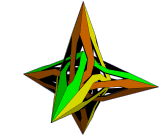
|
A complete polyhedron can be made (with the required two faces per
edge) by adding a thickness to the new facets. To do this, start as
above, then add extra facets to make a complete polyhedron (that is, to
get rid of all the green edges highlighted by Stella). You could do
this in any way, but one way would be to simply fill in the gaps on
each original face made by the first faceting. Then put a copy in a
memory slot, change the scale slightly, and add it back to the item in
memory. Now you'll have a double model, with one slightly smaller than
the other. Use faceting mode again, creating the cut-out facets for
both the inner and outer layers, plus lateral rectangles to connect the
two layers.
Here is the .stel file (you need
Great Stella or Stella4D to view this file).
|

|
All you really require to complete the model is 24 copies of the orange
part seen here. I used 8 in each of 3 colours. One could connect them
with tabs, which I now think may have been preferable, but I printed
nets for separate caps which fit inside each vertex, seen here in
purple. The main parts are then glued onto these.
Here is the .stel file for
these extra parts.
|
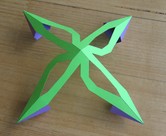
|
Here's four of the main parts glued around one of the caps.
|

|
Two sets of four now done.
|

|
Nearing the end.
|
